Ever struggled with wet sawdust? Discover transformative ways to dry and unlock its hidden potentials! Curious? Read on!

Sawdust is considered a waste or by-product that forms during woodworking and wood carving operations such as sanding, sawing, routing, and milling.
But have you ever thought of getting benefits from sawdust other than just wasting them away? Sawdust is an excellent material to produce fertilizer and for construction purposes.
But how is that possible? Yes, that’s possible by removing moisture from sawdust using a sawdust dryer with a special method called “Dry out sawdust”.
In order to get the best use from sawdust, let’s find out, How to dry out sawdust?
To dry out sawdust, feed sawdust into a dryer to remove excess moisture from sawdust. Rotary dryer use rotation of the dryer to dry out sawdust, aerodynamic dryer dry out sawdust using hot air and belt dryer use hot air or flue gases. The moisture content of sawdust reduces from 60% to 10 – 12% during drying out.
But there’s a lot more to know about how to dry out sawdust properly.
Yes, there are lots of methods to do that we are going to discuss what suits you the most depending on your needs.

In this article, I’ll explore, the importance of sawdust drying out, dryers you can use to dry out sawdust and how to dry out sawdust properly, and a lot more.
Furthermore, I’ll answer some frequently asked questions as well.
Let’s jump in!
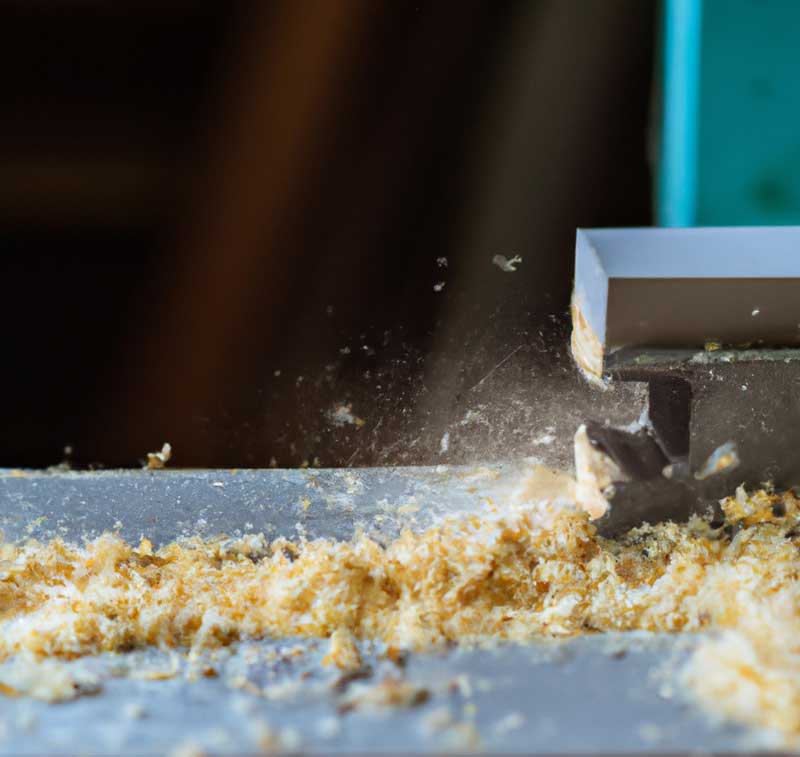
Importance Of Sawdust Drying Out
Apart from removing sawdust after a woodworking project such as sawing, milling, sanding, and routing, you can use it for many different applications as biomass in agriculture, as a wood filler, and many more.
Days of removing the generated sawdust during the woodworking project are already gone. Now it’s time to get benefits from it.
Here’re some of the benefits you’ll get by drying out sawdust,
- Able to use as a wood filler
- Use to make organic fertilizer
- Use for fireplace or bonfire to heat rooms
- Make sawdust candles
- Clean floors and furniture
- Use as an absorbent
- Use as an eco-friendly herbicide
- To dry out materials by wrapping them with dry sawdust
- Space healing
- Construction purposes
- Insulate ceilings of cottages or houses
- To increase smoke when smoking meat
- Dried-out sawdust can be used for subsidiary plots such as chicken coops to absorb excess moisture
In large-scale pellet facilities, drying out sawdust is a thermochemical process to produce biomass as a renewable energy source by converting energies.
To dry out sawdust, you need to have a sawdust dryer. Some of them use commercially and some can be used as DIY. So, let’s discuss it,
Sawdust Dryers
Sawdust dryers are machines that are used to dry out sawdust by reducing the moisture content.
Sawdust dryers reduce the moisture content of sawdust from 60% to 10 – 12% using different drying techniques.
Here are the types of dryers you can use to dry out sawdust,
- Rotary drum
- Aerodynamic dryer
- Belt dryer
- Flash dryer
Each of the above dryers uses different procedures to dry out sawdust.
| Sawdust Dryer | Sawdust Drying Technology |
| Rotary drum | Evaporation of moisture from sawdust with the rotation of the drum with hot air |
| Aerodynamic dryer | Dry out sawdust with hot air by crushing |
| Belt dryer | Dry out sawdust while moving with a belt or conveyor using hot air or flue gases |
| Flash dryer | Take Water vapor out from sawdust using hot air |
As you can see, each sawdust dryer works differently with various methods. But the main purpose of each machine is to take the moisture content out from sawdust and dry it out.
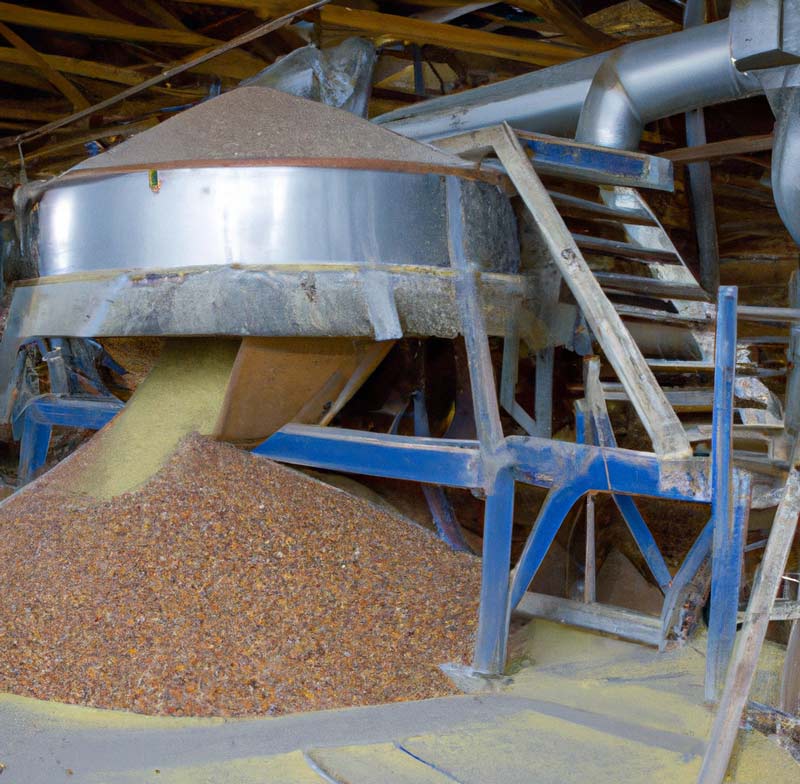
Let’s discuss each of the above sawdust dryer’s features and the way of working in detail.
1. Rotary Drum
The rotary drum is the most popular dryer used to dry out sawdust. It is also known as the Do-It-Yourself drum layer which can be tried out even for a beginner in woodworking.
The rotary drum is easy to use and user friendly than other dryers. The rotary drum is also known as the dryer drum.
The rotary dryer includes the following parts which have their own function to remove the moisture out of sawdust,
- Hot air stove
- Feeding hopper
- Carrier roller
- Dryer chamber
- Electric motor driving
- Carrier roller
- Discharging port
- Cyclone separator
- Fan
Apart from that, the following parts of the Rotary drum can be customized as per our purpose,
- Equip elevator
- Heating device
- Weight feeding machine
Dryer cylinder in rotary drum inclined horizontally at an angle of 30 -50.
Wet sawdust is inserted into the feeding hopper through the conveyor or elevator.
Plus, there’re so many welded shoveling plates on the inner wall of the cylinder that helps to scatter and shovel material to increase the contact surface between the sawdust layer and air.
This increases the evaporation efficiency and is able to remove moisture quickly from the sawdust surface. The drying rate will be increased.
Blades inside capture the sawdust and mix them well while exposing sawdust to the hot air.
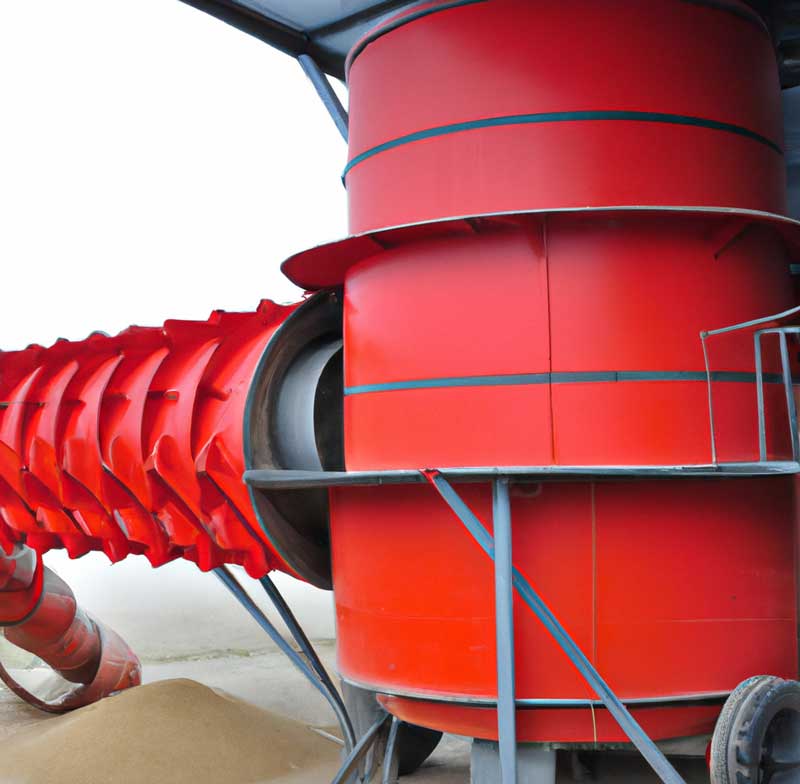
Let’s find out how to dry out sawdust using a Rotary drum,
How To Dry Out Sawdust Using A Rotary Drum
- First, collect the sawdust you want to dry out from the dust collection pipe system or collect it manually.
- Feed wet sawdust into the feeding hopper through an elevator or conveyor.
- After feeding, hot air enters the rotary cylinder with material
- The rotation of the drum starts, and sawdust moves from higher to lower ends due to gravity
- During this time sawdust gets exposed to the hot air.
- Welded shoveling plates mix sawdust with hot air inside and increase the area of the contact surface between the sawdust particles and hot air. This increases the drying efficiency.
- The sawdust moves forward as the drum rotates.
- Finally, the cyclone dust collector grabs the sawdust that is mixed with hot air.
- Water vapor which was inside the sawdust discharged from the upper outlet with exhaust gas.
- Dried sawdust discharged from the lower outlet of the rotary dryer.
- Collect the dried sawdust from the lower outlet.
That’s it!
This is how to dry out sawdust using a rotary drum which is the most popular and easiest method of drying out sawdust.
You may have noticed, most of the steps are fully automated and you only have to do the feeding part at the start and the collecting part from the end.
Make sure to input clean sawdust with no other residue during feeding to use the rotary dryer for so long with no issues.
Otherwise, other materials may get trapped inside the machine and reduce its working efficiency.
The disadvantage of using a rotary dryer is its heaviness. Installation and transportation of rotary dryers can be extremely difficult.
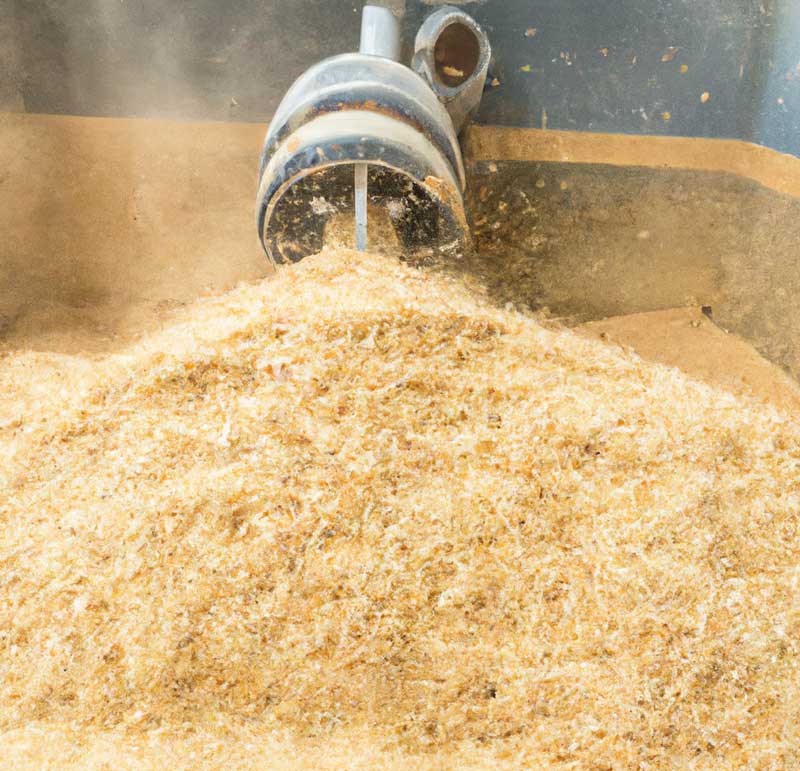
2. Aerodynamic Dryer
The aerodynamic dryer seconds only to the rotary dryer when drying out sawdust. As the name implies, an aerodynamic dryer uses aerodynamic technology to remove moisture content from the sawdust and dry it out.
Here’re the components of an aerodynamic dryer,
- Heat generator
- Fan
- Drying line
- Sifter
- Over
- Cyclone dust collector
Easy of the above component has specific functionality to dry out sawdust.
An aerodynamic dryer basically, crushes the sawdust dry out with the help of hot air.
It is able to reduce the moisture content of sawdust from 60% to 10 – 12%. Aerodynamic dryers are able to produce 400 – 800kg of dry sawdust per hour which is quite a lot compared to the rotary dryer.
An aerodynamic sawdust dryer takes much less space than a rotary dryer since it crushes sawdust before drying. But the complexity of the aerodynamic dryer is high compared to the rotary dryer.
The following factors are important to consider when drying out sawdust using an aerodynamic dryer,
- Dryer parameters
- The total area of treated sawdust particles
- Features of sawdust
If you’re a beginner in woodworking, better to take guidance from manufacturers or professionals before using an aerodynamic dryer to dry out sawdust. It is too complex for an amateur.
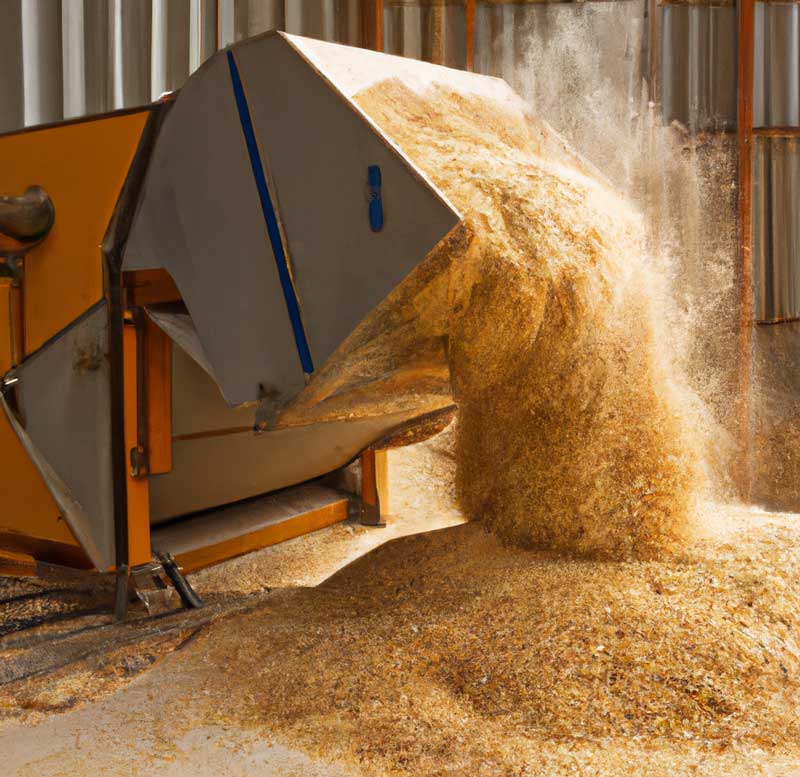
Let’s find out how to dry out sawdust using an aerodynamic dryer,
How To Dry Out Sawdust Using An Aerodynamic Dryer
- Collect sawdust using a dust collection system or manually.
- Insert sawdust into the feeder
- Sawdust falls from the feeding hopper to the drying chamber
- Preheat sawdust using a stream of hot air with a temperature of 120 – 1500C inside the drying chamber
- Convert heated sawdust into the fluidized bed
- Dry fluidized bed until it reaches the desired humidity by removing moisture by evaporation when it reaches the required height
- Sawdust material circulates through a hot chamber until it gets lighter in weight and carry out by gases into the cyclone
- Dried sawdust can be collected from the bottom outlet
Drying sawdust with an aerodynamic dryer is safe due to the low-temperature levels of the drying agent.
That’s how you can dry out sawdust using an aerodynamic dryer.
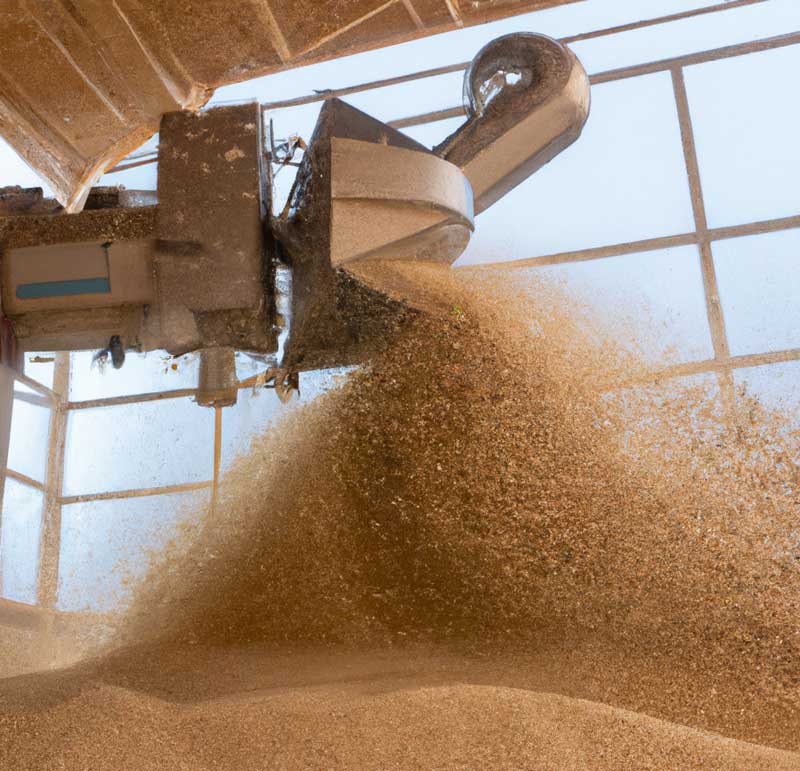
3. Belt Dryer
Belt dryers can be used for both small and large work areas by changing the size of their modular design.
Generally, low-temperature belt dryers are the ones that are popular in drying sawdust since it uses low caloric heat with low emissions.
Belt dryers produce high-quality dried sawdust with less consumption with the use of its belt dryer technology. Generally, it produces large volumes in large industries.
Here’re the components of the belt dryer,
- Product feeder
- Sawdust flowing system
- Sawdust turning device
- Discharging unit
- Web belt
- Fresh air intake
- Hot air generator/heat exchanger
- Exhaust air outlets
Each of the above components has a specific task during drying out the sawdust.
In the belt dryer, sawdust moves through an endless tape that stretches always with driven drums.
The drying process is done with the help of hot air or flue gases that move cross-flow along the endless belt while the sawdust is moving through it.
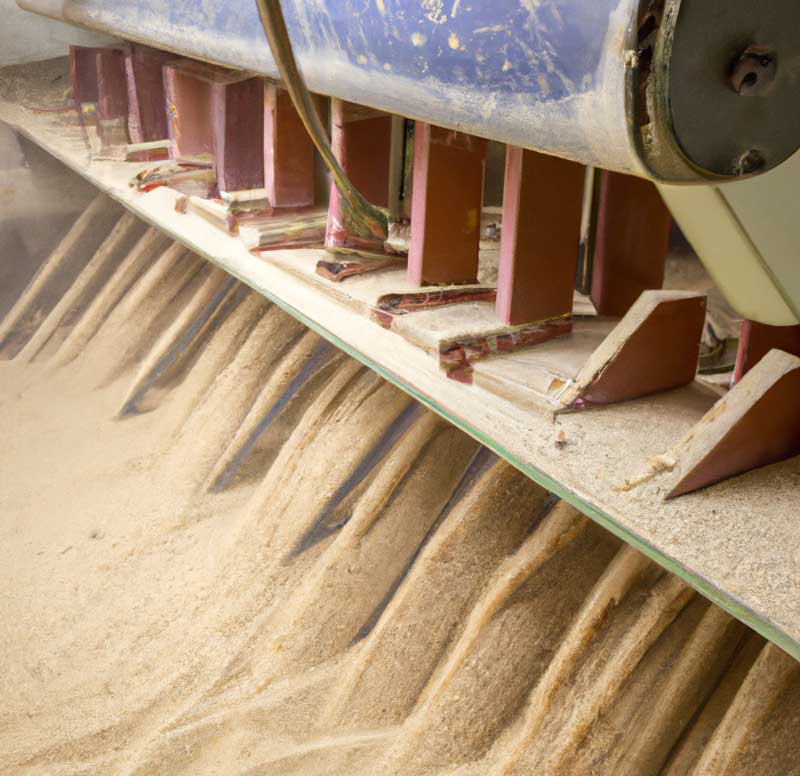
Let’s find out how to dry out sawdust using a belt dryer,
How To Dry Out Sawdust Using A Belt Dryer
- Wet sawdust fed continuously into the belt dryer
- Then two conveyor screws spread the wet sawdust all over the belt and level it to a certain height. This helps to improve the contact surface between the hot air and sawdust layer which increases the drying efficiency.
- Sawdust moves to the drying zone which is known as the belt feeder
- During this time hot air will be generated in the heat exchanger unit with an available heating source
- In the drying tunnel, hot air moves through the sawdust layer and evaporates moisture from the sawdust by lowering the humidity.
- The amount of air that needs to be supplied is measured by considering the total length of the dryer. Inlet air volume is higher than the outlet air in the discharge zone.
- Sawdust layers are ventilated from top to bottom with good air circulation. This helps to increase the drying efficiency.
- Fines are separated from the sawdust.
- The conveyor belt exhausts the hot air
- The dried sawdust layer is transported and mixed after half of the length of the belt dryer using a turning device unit.
- The moisture of both layers and bottom layers of sawdust will be removed upon mixing
- This produces homogeneous high-quality dried sawdust as quality output.
- Finally, after passing the drying zone, dried sawdust discharge
- Sawdust falls from the conveyor belt to the conveyor screw
- Collect dried sawdust from the outlet for further proceedings.
Yes, I know, this is complex. That’s why belt dryers are mostly used in industries to dry out large-scale sawdust amounts.
Belt dryer, installation, and maintenance are difficult. Initial costs are also expensive and able to get profitable uses for industries.
This produces the best quality dried sawdust with an equal concentration of moisture content all over the product.
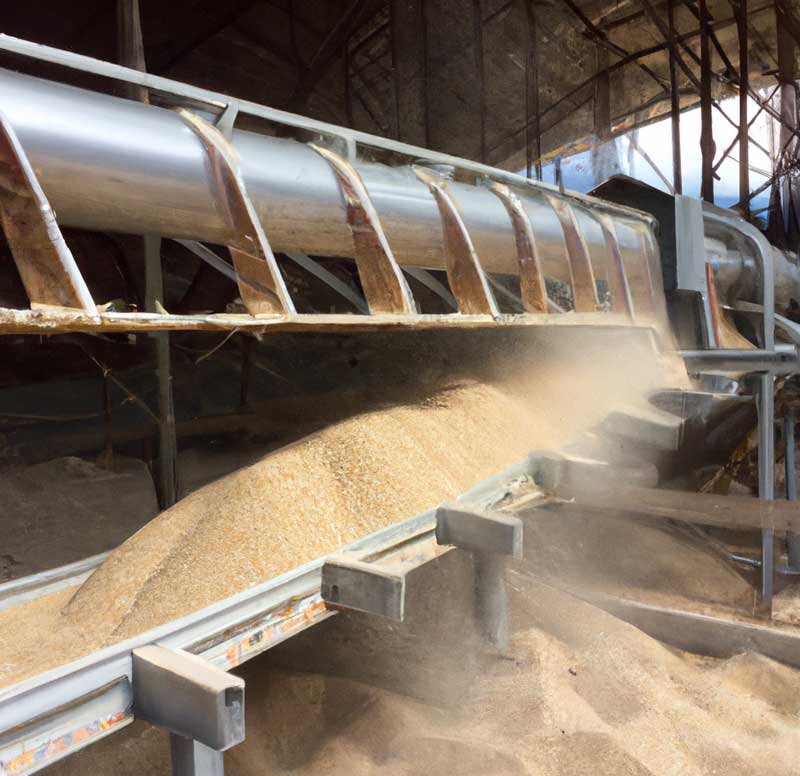
4. Flash Dryer
A flash dryer which is also known as a pipe dryer can be used in a small working area to dry sawdust and make fertilizers and biomass out of it.
Flash dryer has a new type of design with a modern structure. It is not heavy as a rotary dryer.
Sawdust can easily flow through the flash dryer and is able to reduce the moisture content of sawdust down to 8 – 17%.
But the initial moisture content of sawdust should be below 50% for efficient drying. The diameter of sawdust is less than 3mm.
Here’re the components of the flash dryer,
- Hot wind stove
- Sawdust feeder
- Drying cyclone
- Cyclone separator
- Controlling unit
Flash dryer adopts a two-time s circulating heating unit by strengthening the mass and heat transfer rates.
The machine is fully automated and once you input the sawdust with moisture content below 50%, it does the drying procedure and outputs sawdust with less moisture content inside.
Flash dryer is a low-cost sawdust dry-out machine that can get good profit with little money.
Flash dryer consumes less energy, outputs less noise, and is easy to install and maintain.
Flash dryer (pipe dryer) has become the trending dryer machine in the woodworking industry with lots of cool features.
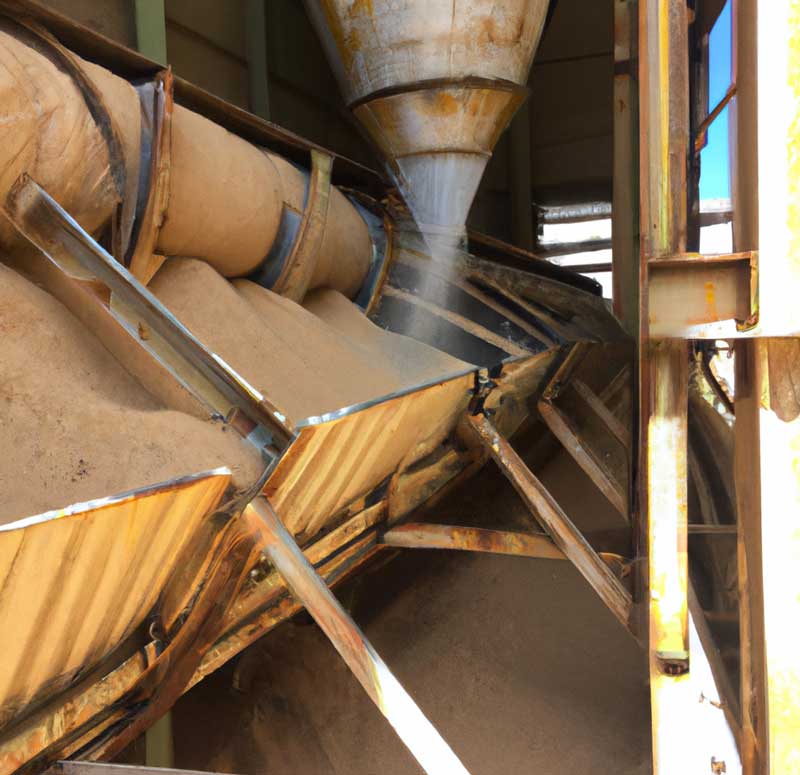
Let’s find out how to dry out sawdust using a Flash dryer,
How To Dry Out Sawdust Using A Flash Dryer
- Feed wet sawdust into the pipe through a conveyor device
- Meanwhile, fresh air will be heated in the heat exchanger
- Drive heated air into the dryer
- Mix heated air with sawdust with a good contact area between two layers
- Meanwhile, water vapor evaporates from sawdust goes outside through the outlet pipe
- Collect dried sawdust from the discharging hole
That’s it! Working with a flash dryer/pip dryer is so much easier since it is user-friendly and easy to maintain.
Flash dryer is highly recommended for both amateurs and professionals in woodworking. This is the future of drying out sawdust.
That’s it, folks! Hope you learned all you need to know about, how to dry out sawdust with all the dryer machines.
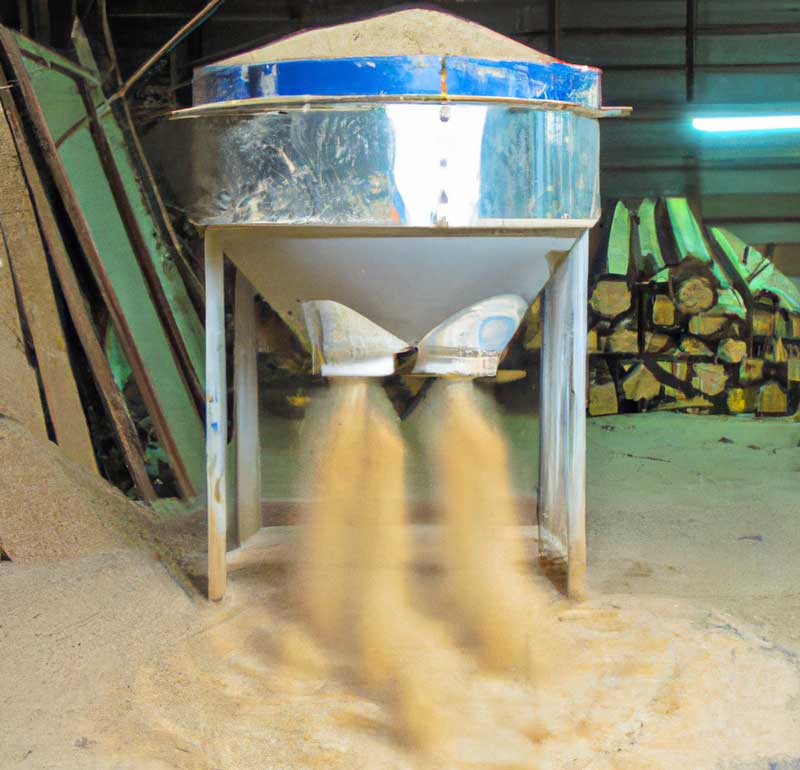
How Long Does It Take To Dry Sawdust?
It takes 6 hours to dry 600 lbs of sawdust with a rotary dryer. You can dry sawdust much faster with an aerodynamic dryer or belt dryer industrial scales.
The drying time of sawdust depends on several factors. They are,
- Weight of wet sawdust
- Moisture content inside
- Machine efficiency
- Age of the dryer
- Power consumption of the machine
Therefore, the drying time of sawdust is never a straight answer.
You can contact the manufacturer of the sawdust dryer to get to know about the approximate drying time of sawdust.
How Does A Sawdust Dryer Work?
Sawdust dryer works on the principle of two times drying heat circulation systems.
The heat transfer rate and the mass transfer rate are balanced inside the machine and hot air circulation helps to remove moisture from sawdust and make them dry out.
Generally, a sawdust dryer is able to reduce the sawdust moisture content from 60% to 10 – 12%. This can vary upon the weight of the mass and the machine’s efficiency.
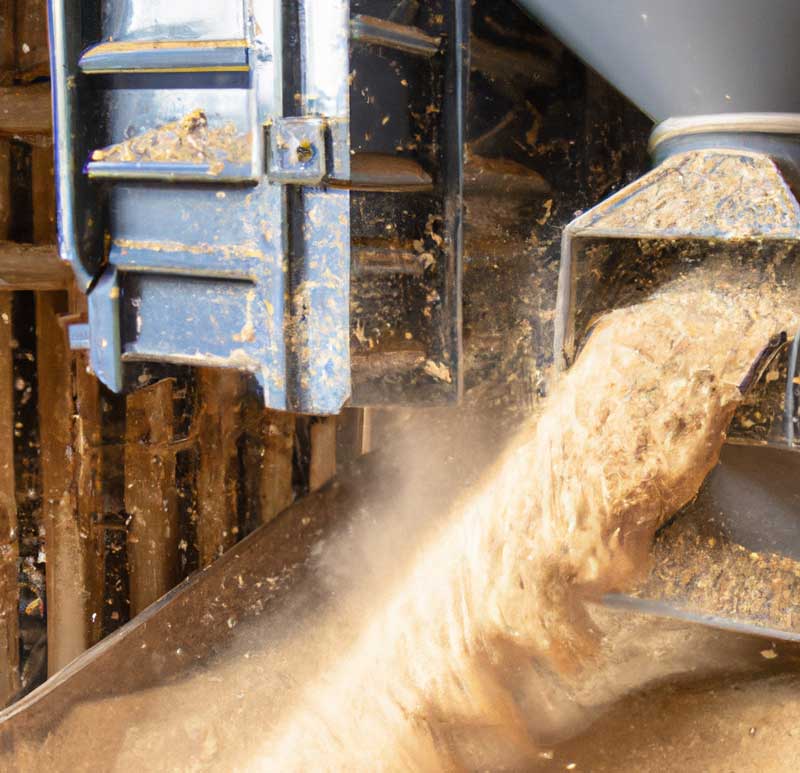
How To Dry Woodchips?
Woodchips can be dried using passive drying consists of piling or stacking timber by using ambient temperature and hot air to remove moisture content from the woodchips and make them dry.
Or you can dry woodchips using active drying with the assisted flow of air to remove moisture content from the woodchips.
Let’s answer some frequently asked questions.
FAQs
What are the benefits of drying out sawdust?
Drying out sawdust enhances its utility, making it a valuable resource for various applications like organic fertilizer production, biofuel creation, and as a wood filler, absorbent, or insulating material.
Which types of dryers are commonly used to dry sawdust?
Common dryers for sawdust include rotary drum, aerodynamic, belt, and flash dryers, each employing distinct methods to effectively reduce the moisture content of sawdust.
How long does it take to dry sawdust using a rotary dryer?
It typically takes about 6 hours to dry 600 lbs of sawdust using a rotary dryer, though the exact time can vary based on several factors including the initial moisture content and machine efficiency.
Is it possible to dry sawdust naturally without using mechanical dryers?
Yes, sawdust can be dried naturally by spreading it out in a thin layer and exposing it to sunlight and air, although this method takes significantly more time compared to using mechanical dryers.
What is the moisture content reduction when drying sawdust?
Sawdust dryers can effectively reduce the moisture content from around 60% to approximately 10-12%, making the sawdust suitable for various industrial and agricultural applications.
Can dried sawdust be used as a biofuel?
Yes, dried sawdust can be converted into pellets or briquettes and used as a sustainable source of biofuel for heating and energy generation.
Is it safe to dry sawdust indoors?
While it’s technically possible, safety precautions must be adhered to in order to prevent fire hazards, and adequate ventilation is necessary to manage dust and fumes.
What applications does dried sawdust have in agriculture?
Dried sawdust is often used in agriculture as an organic fertilizer, soil amendment, and as an absorbent material in animal bedding to ensure a dry and comfortable environment for livestock.
How is the belt dryer different from other types of dryers?
Belt dryers are notable for their modular design, low operational costs, and energy efficiency, utilizing a continuous conveyor belt to transport and dry sawdust efficiently.
Did I cover all you wanted to know about: How To Dry Out Sawdust?
In this article, we have widely discussed, how to dry out sawdust efficiently using a rotary drum, aerodynamic dryer, belt dryer, and flash dryer. We have discussed what suits you most and the pros and cons of each method.
You can dry sawdust with a rotary dryer, aerodynamic dryer, belt dryer, and flash dryer. Feed wet sawdust into the drying unit through a conveyor device and let hot air pass through the sawdust to remove moisture content by evaporation. Finally, collect dried sawdust from the outlet.
Furthermore, I’ve answered frequently asked questions as well.
Hope you gain good knowledge about, how to dry out sawdust with all tips and techniques.
Try to dry out sawdust using all the dryers and finally use the latest flash dryer also known as the pipe dryer method and experience the improvements in the latest technology.